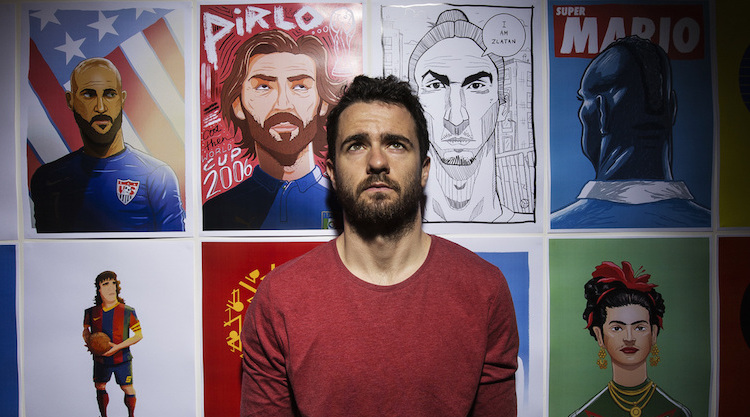The relationship between advertising and art has long been discussed with many perceiving it to be antagonistic. While this may have been true decades ago, it’s certainly anything but that in 2016. Corporate America is speaking daily through branded content, with many companies striving to embrace true storytelling.
As soccer marketers, we benefit from an ability to tell stories through a genuine consumer passion point. But, we only succeed when our work connects clients to our sport authentically. More and more, we see soccer-inspired art as a bona fide way for brands to grab (and hold) the attention of American fans in a meaningful way.
Why art, you ask?
America is a melting pot of soccer heritage and the appeal in soccer-inspired art is derived from the sport’s cultural roots that stretch far and wide. The graffiti murals outside Mexico City’s Estadio Azteca, the punk vibe of Hamburg, Germany’s F.C. St. Pauli, a FIFA World Cup 2014 exhibition at the Los Angeles County Museum of Art, L.S. Lowry’s famed “Going to the Match” painting from Manchester, England and the Timbers Army tifo displays at Portland’s Providence Park are just a few of the thousands of artistic examples soccer fans in the U.S. may recognize.
We have come to know some extremely talented artists who make their living by communicating a love and deep understanding of soccer through illustration. Some of these relationships have spawned working partnerships, while others have just made us into admirers.
One such artist is Dan Leydon. Dan has exhibited his soccer work multiple times in New York while attracting a diverse client list that includes Nike, ESPN, LA Galaxy and Foot Locker. These brands hire Dan for his knowledge of the game and it’s culture as much as for his illustration skill. You’ll enjoy some of Dan’s work below, and I highly recommend checking out his recent “I See Football Everywhere” project which is a mash-up of iconic brand logos and famous soccer names.

What is it about art that adds to soccer’s overall appeal?
In my experience soccer is the most adaptable of sports, therefore the most likely to grow within a culture. At a basic level it’s on a similar wavelength to basketball (i.e. a single person can play it or two full teams can compete). It’s perfect for tight street games in the favellas of Brazil while also being suited perfectly to the astro pitches trainees use in futuristic Belgian academies. Ground level adaptability means people from all walks of life may embrace it. Most potently, it is the means of escape to a better life for a massive tract of the world population. Traditionally, working class kids make it their lives obsession and in this way it meshes with their other interests; music, fashion and more recently the emergence of street art as a language adopted by the majority of major sporting brands. Soccer’s natural trajectory is an upward one from working class kids to the boardrooms of the biggest brands. It’s accepted knowledge that cool things start with kids who don’t have much before the trend is appropriated and pointed in a more lucrative direction by the companies. Soccer is becoming more and more popular in the US, with recent stats saying it now rivals baseball in the minds of younger fans. It made up that ground in one generation which is astounding.

What brought you into soccer art and where do you see the genre going, especially as it relates to commercial usage and interest in this work?
I started my first football artwork blog in February 2011, Footynews, in my first year I got 250,000 pageviews and secured my first professional illustration job which was illustrating Graham Hunter’s award winning book on FC Barcelona. I started the blog with the intention of sharing funny football photoshops but I quickly started to take what I made seriously. At that time I can remember a handful of people seriously pursuing ‘football art’. Now the span of football artwork blogs seems endless. I think in a way the growth of the football art sector mirrors the juggernaut of the Premier League. Recent reports suggest West Bromwich Albion is now a more financially powerful club that the storied Ajax of Amsterdam. With the ever increasing coverage of soccer there are new fans every day. I’m trying to grasp the fact that I’m not just designing my artwork for the football fans of today but also football fans who aren’t even born yet. It’s hard to predict where football art will go. I can only speak for myself but I am exploring publishing football related fiction and various other avenues as a means to stay relevant.
In terms of commercial use of football art I think there is a core group of very serious and talented illustrators who are aware that to make a living they need to court the biggest brands and to do so they need to be tuned in to the wavelength of what’s popular but also more importantly what can and will be popular. I see the best way to stay on top of things is to direct what is popular by making truly interesting and unique work.




Categories: Art, Digital Content, Featured, Soccer Marketing, Thought Leadership







